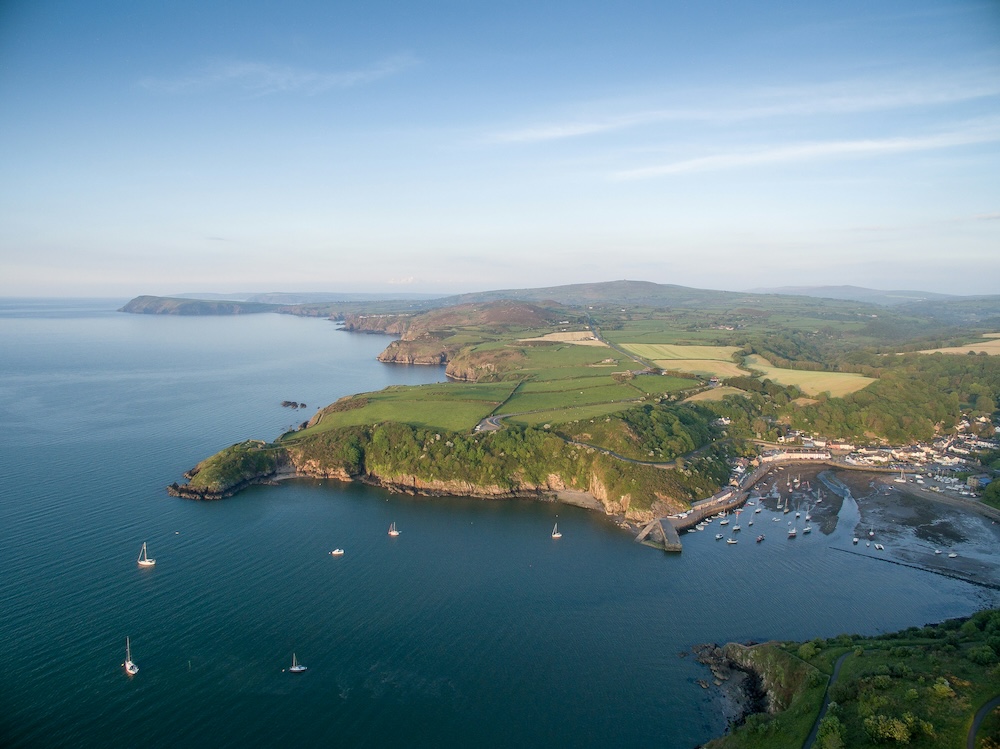John Osmond reports on a lecture by outgoing Director General of National Museum Wales challenging us to raise our game
Wales’s cultural and political leaders should raise their game in projecting Welsh culture to the world says Michael Houlihan, Director General of the National Museum Wales (pictured above). In a parting shot Houlihan, who is leaving to become Chief Executive of New Zealand’s Te Papa Tongarewa museum, told Wales’s leadership to use their history to present a more authentic image of their country.
In a lecture at the museum in Cathays Park last week (available here), Houlihan accuses Wales’s political and cultural establishment of being embarrassed about Welsh cultural distinctiveness. He says they are more enamoured with bland marketing messages about a smart, modern, and high tech Wales that “makes us look indistinguishable from any other western, industrialised complex.”
He quoted the way Wales was presented at last year’s Smithsonian Folk Life Festival in Washington, USA. Each year in July a nation is invited to promote itself on the Mall in front of the Capitol Building – a tremendous opportunity since the festival attracts about a million visitors. As Houlihan said:
“Its purpose is to illustrate the diversity of folk life forms across the world. I attended many high-level meetings here in Wales at which the project was discussed; unfortunately, some of those attending just didn’t get it. The Smithsonian itself was clear, contractually and intellectually, that what it wanted was folk life in the shape of music, story-telling, craft skills, art, poetry, dance and the other characteristic outputs that define a culture. Sitting in those meetings, I frequently felt that presenting an authentic picture of Welsh folk life was at odds with the ‘brand’ of a modern, technologically switched-on Wales that people would want to visit or companies invest in. The basic point was being missed. The singular, sometimes unsophisticated, sometimes contemporary but always authentic expression of a small nation’s culture can be far more attractive and engaging to the outsider than the marketing messages that make it look indistinguishable from any other western, industrialised complex.”
Part of the explanation for Welsh politicians and others being fearful of tapping into an authentic expression of Welsh culture, Houlihan observed, is a lack of engagement with Welsh history. He contrasted this with Ireland where history is seen as central to the way the country is projected in the world. The Irish school curriculum presents a clear and passionate picture of Welsh history. However, Welsh history is merely a curriculum option and continues to be framed within an English perspective or seen in terms of fictional myth and legend. In contrast, Ireland has exploited its real history to the full. As Houlihan put it:
“Ireland has been particularly successful in conveying a continuous story of resistance, blood, martyrdom and the sword as a determinant of politics. This is in part due to its geographical remoteness from the UK compared to Wales’s porous borders, which in the 18th, 19th, and 20th Centuries, drew it, almost seamlessly, into the industrial and economic story of the British Empire. You have to look elsewhere for the hidden and passionate history of Wales and the transmission of cultural memory. This is more likely to be found in the Welsh language, with its shared stories of memories, events and people contributing to preserving a sharp sense of identity, but one which is not effectively articulated in the English language.”
The result, he says, is that those with responsibility for telling the history of Wales, whether it be in the fields of education, heritage or tourism do so in ways that reflect the broad sweep of European and English history rather than the story of daily cultural and social interchange in Wales – a story that, when taken in the round, is truly distinctive:
“Even the originally radical St Fagans has become a cultural memory in its own right; its position as Wales’s number one tourist attraction can be perceived as a barrier to intellectual change and challenge, as it presents a picture of a Wales that never existed and its original values and richness of purpose are now confined behind the public areas in the archives, collections and accumulated folk stories that are rarely seen but, nevertheless, carefully ordered and preserved. Is St Fagans a microcosm of Wales itself, marketing a relatively easily understood, almost Hollywood image of a culture that never really existed, while the real grain and fibre of that culture is preserved and stored, museum-like, out of sight?”
Houlihan argues that Wales’s survival as a distinctive culture depends on new leadership from the National Assembly and Welsh Government:
“In corporate terms, Wales needs a vision for culture and the leadership of this process can only come from government. As already noted, the Assembly is an expression of Wales’s culture. Without a vibrant, confident and authentic culture there would be no need for an Assembly. The Assembly is now crucially placed to engage with culture, to articulate a vision for culture and the part it is expecting culture to play in the bad times ahead. Otherwise, culture will be seen simply and simplistically as yet another expenditure barrier to closing the fiscal gap.”
These are messages that will no doubt be taken on board by Michael Houlihan’s successor, David Anderson (pictured below) presently Director of Learning and Interpretation at the Victoria and Albert Museum, who will be taking over in October Announcing his appointment last week, National Museum Wales said he had been chosen “because of his deep understanding of the role of national museums and museum culture, his particular expertise of the role of education in museums.”
On the face of it, Anderson’s background holds out some promise that he will pick up and run with Michael Houlihan’s message. Born in Belfast he studied Irish history at Edinburgh University. After working as a history teacher in a state school, he became Education Officer at the Royal Pavilion Art Gallery and Museum, Brighton in 1979, and then Head of Education at the National Maritime Museum in Greenwich in 1985.
He joined the Victoria & Albert Museum as Head of Education in 1990. From 2003 to 2008, as co-Chair of the Exhibition Road Cultural Group, he shaped the development of a new organisation dedicated to development of cultural and educational programmes through partnership between 15 major institutions in South Kensington, including three national museums, three universities, the Royal Albert Hall, the Royal Geographical Society and the Ismaili Centre. He is author of an influential report A Common Wealth (1997), which argued that museums should offer much better services to learners of all kinds, from family groups to pupils and students pursuing courses at all levels.







Comments are closed.